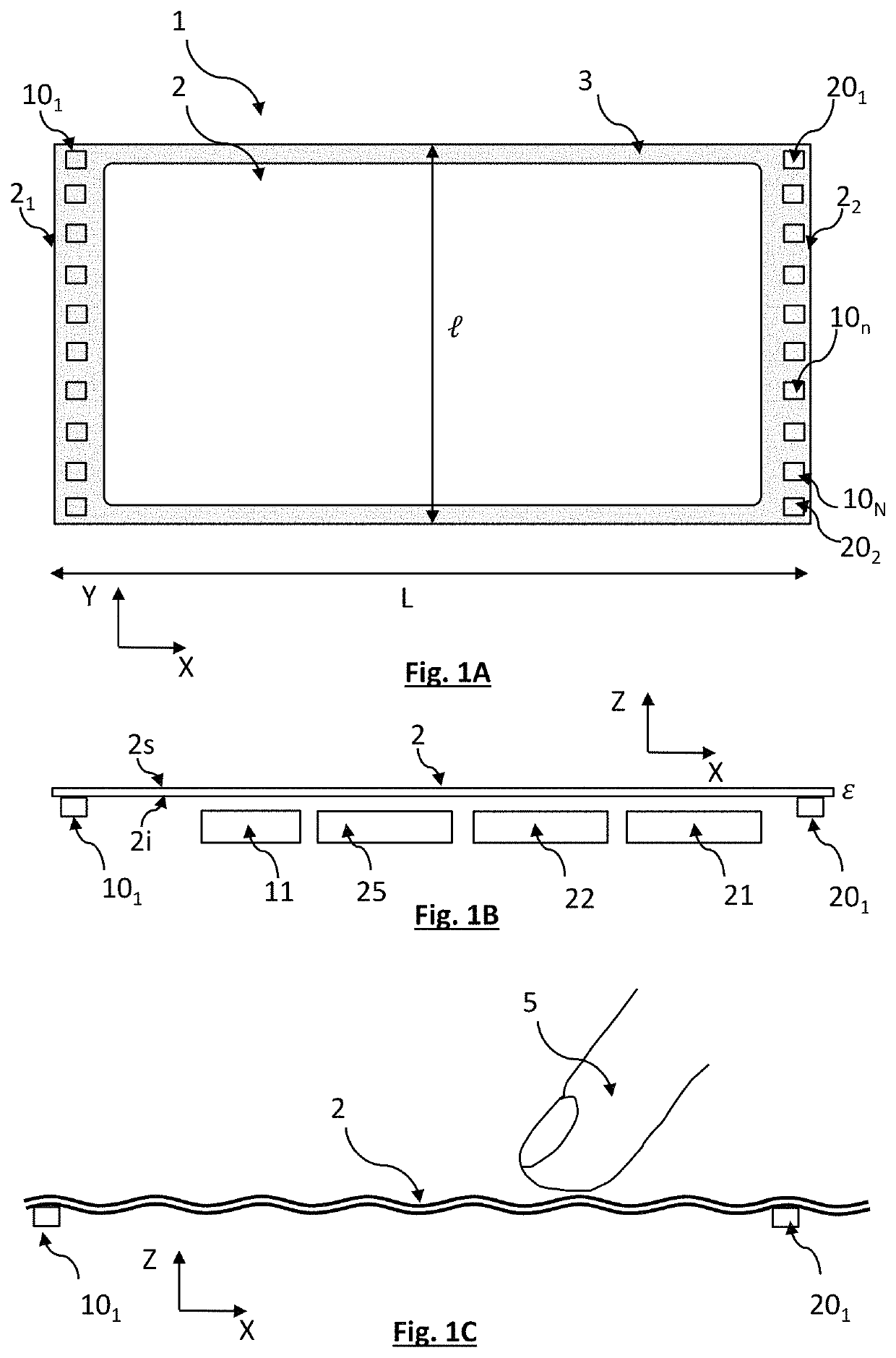Touch-sensitive interface comprising a force sensor
a force sensor and touch-sensitive technology, applied in the direction of user-computer interaction input/output, electric digital data processing, instruments, etc., can solve the problem of not allowing the force exerted by the finger to be quantified
- Summary
- Abstract
- Description
- Claims
- Application Information
AI Technical Summary
Benefits of technology
Problems solved by technology
Method used
Image
Examples
Embodiment Construction
[0069]FIGS. 1A and 1B show one example of a touch-sensitive interface according to the disclosure. The interface comprises a plate 2, extending in a plane XY and forming, in this plane, a rectangle of length L (along the axis X) and of width l, (along the axis Y). In this example, L=195 mm, and l=125 mm. The thickness c of the plate, along the axis Z, is 1.5 mm. The term “plate” denotes a rigid element that is thin with respect to its width or its length. The width and the length are not critical parameters, and may be in the range between a few cm, for example, 3 cm, to 30 cm or more. The touch-sensitive interface 1 is designed to control a device, for example, a robotic machine or a microprocessor allowing the execution of a software program. Thus, the touch-sensitive interface is able to supply a control signal to the device.
[0070]The thickness c must allow a vibration of the plate 2 according to a stationary flexural wave 4, as described hereinafter. The thickness c depends on t...
PUM
 Login to View More
Login to View More Abstract
Description
Claims
Application Information
 Login to View More
Login to View More - R&D
- Intellectual Property
- Life Sciences
- Materials
- Tech Scout
- Unparalleled Data Quality
- Higher Quality Content
- 60% Fewer Hallucinations
Browse by: Latest US Patents, China's latest patents, Technical Efficacy Thesaurus, Application Domain, Technology Topic, Popular Technical Reports.
© 2025 PatSnap. All rights reserved.Legal|Privacy policy|Modern Slavery Act Transparency Statement|Sitemap|About US| Contact US: help@patsnap.com



